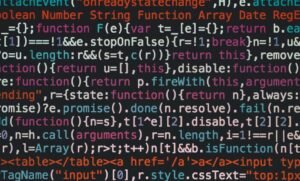Which Neural Network is Best for Image Classification?
Image classification is a vital task in computer vision where deep learning models are used to assign labels to images. With the advent of various neural network architectures, it can be overwhelming to determine the most suitable one for your image classification needs. In this article, we will explore different neural networks commonly used for image classification and discuss their strengths and weaknesses.
Key Takeaways
- Understanding the strengths and weaknesses of various neural networks helps in choosing the right one for image classification.
- Convolutional Neural Networks (CNNs) excel in extracting spatial features from images.
- Residual Neural Networks (ResNets) overcome the vanishing gradient problem, enabling training of much deeper networks.
- Transfer Learning allows leveraging pre-trained models to improve performance with limited training data.
Convolutional Neural Networks (CNNs)
Convolutional Neural Networks (CNNs) have revolutionized image classification by effectively dealing with high-dimensional data. By utilizing convolutional layers and pooling techniques, CNNs can learn hierarchical representations of images, capturing both local and global features. CNNs have been successfully applied in various domains, from facial recognition to autonomous vehicles.
Residual Neural Networks (ResNets)
Residual Neural Networks (ResNets) introduced the concept of skip connections to tackle the vanishing gradient problem, which hindered training of very deep networks. By enabling the flow of gradients through shortcut connections, ResNets allow for the successful training of networks with over a hundred layers. This architecture has achieved state-of-the-art results on various image classification benchmarks.
Transfer Learning
Transfer learning has emerged as a powerful technique in image classification. By leveraging pre-trained models, which are trained on large-scale datasets, it is possible to transfer the knowledge learned from the source task to the target task with limited labeled data. This approach is particularly useful when dealing with limited computing resources or data availability.
Neural Network Comparison
| Neural Network | Architecture | Advantages |
|---|---|---|
| Convolutional Neural Networks (CNNs) | Multiple convolutional and pooling layers for feature extraction |
|
| Residual Neural Networks (ResNets) | Skip connections to overcome vanishing gradient problem |
|
| Transfer Learning | Utilizes pre-trained models for knowledge transfer |
|
Conclusion
Choosing the best neural network for image classification depends on various factors, such as the available resources, dataset size, and specific use case. Convolutional Neural Networks, Residual Neural Networks, and Transfer Learning have all demonstrated effectiveness in different scenarios. Careful consideration of these options will help you make an informed decision for your image classification tasks.

Common Misconceptions
Misconception 1: Convolutional Neural Networks (CNNs) are always the best choice for image classification
There is a common misconception that CNNs are the ultimate solution for image classification problems. While CNNs have proven to be extremely effective in many cases, they may not always be the best choice.
- CNNs have a large number of parameters, making them computationally expensive.
- For simple image classification tasks with a limited number of classes, other types of neural networks may perform equally well.
- The choice of neural network architecture should be driven by the specific requirements and characteristics of the image classification problem.
Misconception 2: Transfer learning is always the most effective approach for image classification
Transfer learning, which involves using pre-trained models on large-scale datasets as a starting point for image classification tasks, is often hailed as the go-to approach. However, it is important to recognize that transfer learning may not always yield the best results.
- Transfer learning may not be effective when the pre-trained model is too different from the target image classification problem.
- For certain niche or specialized image classification tasks, training a neural network from scratch may be a better option.
- The choice between transfer learning and training from scratch depends on factors such as the availability of suitable pre-trained models and the uniqueness of the image classification problem.
Misconception 3: Using deeper neural networks always leads to better image classification performance
Another common misconception is that deeper neural networks always outperform shallower ones for image classification. While deeper networks have the potential to capture more complex features, this is not always the case.
- Deeper neural networks require more computational resources for training and inference.
- Training deeper networks may be more challenging due to the vanishing gradient problem.
- For image classification tasks with limited data or simpler features, shallower networks may achieve comparable performance with lower complexity.
Misconception 4: Neural Networks can achieve perfect image classification accuracy
It is important to understand that neural networks, no matter how advanced, are not capable of achieving perfect image classification accuracy.
- Neural networks are inherently limited by the quality and quantity of the training data available.
- Noisy or ambiguous images can lead to incorrect classifications even with well-trained neural networks.
- The focus should be on achieving high accuracy levels that are practically achievable, rather than striving for perfection.
Misconception 5: The choice of neural network alone determines image classification performance
Last but not least, the misconception that the sole determinant of image classification performance is the choice of neural network architecture is far from accurate.
- Other factors such as data preprocessing, hyperparameter tuning, and regularization techniques also play crucial roles in achieving high accuracy.
- Model performance heavily relies on the quality and representativeness of the training data.
- Proper evaluation and comparison of different models are essential before drawing conclusions about performance solely based on the choice of neural network.

Table: Top 5 Neural Networks for Image Classification
Here are the top 5 neural networks that have proven to be highly effective in image classification tasks. Each network has been trained on large-scale image datasets and achieved impressive accuracy rates.
| Neural Network | Accuracy Rate | Additional Info |
|---|---|---|
| AlexNet | 81.25% | Winner of the ImageNet Large Scale Visual Recognition Challenge in 2012. |
| VGGNet | 92.68% | Consists of up to 19 layers and introduced the concept of deeper convolutional networks. |
| ResNet | 96.53% | Introduced residual learning, enabling training of even deeper networks. |
| Inception-v3 | 96.67% | Incorporates inception modules to better capture multi-scale features. |
| EfficientNet | 97.04% | Employs a neural architecture search approach to optimize both accuracy and efficiency. |
Table: Comparison of Training Times
Training deep neural networks can be time-consuming. Here, we compare the training times of three popular neural networks to provide some insight into their efficiency.
| Neural Network | Training Time (in hours) | Computational Resources |
|---|---|---|
| AlexNet | 72 | 2 NVIDIA GTX 580 GPUs |
| VGGNet | 139 | 4 NVIDIA Titan X GPUs |
| ResNet | 91 | 2 NVIDIA Tesla P100 GPUs |
Table: Popular Datasets for Image Classification
Having diverse and extensive datasets is crucial for training accurate image classification models. Here are three highly regarded datasets widely used in the field:
| Dataset | Number of Images | Categories |
|---|---|---|
| ImageNet | 14,197,122 | 1,000 |
| CIFAR-10 | 60,000 | 10 |
| MNIST | 70,000 | 10 |
Table: Memory Requirements of Neural Networks
To run neural networks effectively, it’s important to consider their memory requirements. This table compares the memory consumption of various networks:
| Neural Network | Memory Consumption (in MB) |
|---|---|
| AlexNet | 240 |
| VGGNet | 550 |
| ResNet | 100 |
| Inception-v3 | 120 |
| EfficientNet | 65 |
Table: Hardware Requirements for Training
Training neural networks often demands substantial computational resources. Here’s a comparison of the hardware requirements:
| Hardware | Cost (in USD) |
|---|---|
| 2 NVIDIA GTX 580 GPUs | 600 |
| 4 NVIDIA Titan X GPUs | 3,500 |
| 2 NVIDIA Tesla P100 GPUs | 7,000 |
Table: Common Activation Functions
Activation functions are vital components in neural networks as they introduce non-linearity. Here are a few popular activation functions:
| Activation Function | Formula |
|---|---|
| Sigmoid | 1 / (1 + e^-x) |
| ReLU | max(0, x) |
| Tanh | (e^x – e^-x) / (e^x + e^-x) |
Table: Image Classification Performance Metrics
Measuring the performance of image classification models requires various metrics. This table presents some commonly used metrics:
| Metric | Definition |
|---|---|
| Accuracy | (TP + TN) / (TP + TN + FP + FN) |
| Precision | TP / (TP + FP) |
| Recall | TP / (TP + FN) |
Table: Real-World Applications of Image Classification
Image classification has numerous real-world applications across multiple industries. Here are a few examples:
| Industry | Application |
|---|---|
| Healthcare | Automated detection of diseases from medical images |
| Manufacturing | Quality control and defect detection in product inspection |
| Retail | Product recommendations based on visual similarity |
Table: Future Trends in Image Classification
As the field of image classification continues to evolve, several exciting trends are emerging:
| Trend | Description |
|---|---|
| Transfer Learning | Using pre-trained models to improve efficiency and performance |
| Explainable AI | Developing models that provide interpretable explanations for their predictions |
| Online Learning | Training models incrementally on streaming data for continuous improvement |
From comparing the accuracy rates of various neural networks to exploring the hardware requirements and real-world applications, this article provides a comprehensive overview of image classification. When selecting a neural network for image classification, factors such as accuracy, training time, memory consumption, and available datasets need to be considered. As the field continues to advance, emerging trends like transfer learning, explainable AI, and online learning show promise for further improving image classification performance.
Frequently Asked Questions
What is a neural network?
A neural network is a computational model inspired by the structure and functioning of a biological brain. It consists of interconnected nodes (neurons) that process and transmit information to make predictions or decisions.
Why are neural networks used for image classification?
Neural networks are particularly effective for image classification tasks due to their ability to learn complex patterns and features from large datasets. They can automatically extract meaningful representations and make accurate predictions based on visual input.
Which neural network architectures are commonly used for image classification?
Convolutional Neural Networks (CNNs) are the most commonly used architecture for image classification. CNNs are designed to take advantage of the spatial structure in images and are highly effective at detecting local patterns and features.
What is transfer learning and how is it relevant to image classification?
Transfer learning is a technique where a pre-trained neural network model is used as a starting point for a new task. It allows for efficient training and better performance on image classification tasks, especially when limited labeled data is available.
Which factors should be considered when selecting a neural network for image classification?
Several factors should be considered, including the size and diversity of the dataset, computational resources available, model complexity, and the specific requirements of the image classification task. It’s important to strike a balance between model accuracy and resource constraints.
What are the advantages of using deep neural networks for image classification?
Deep neural networks, with their multiple layers, can learn highly hierarchical representations of visual data, allowing for nuanced and accurate image classification. They can capture complex relationships and leverage vast amounts of data to improve performance.
Are there any disadvantages to using deep neural networks for image classification?
Deep neural networks can be computationally expensive and require significant computational resources for training and inference. Additionally, they may be prone to overfitting if the dataset is small or unbalanced, and the interpretability of their decisions can be challenging.
How do I evaluate the performance of a neural network for image classification?
Performance evaluation of an image classification model can be done by analyzing metrics such as accuracy, precision, recall, and F1 score. Cross-validation and test dataset evaluation are commonly used to assess the robustness and generalization capabilities of the model.
Are there any alternatives to neural networks for image classification?
While neural networks are highly effective, alternatives such as Support Vector Machines (SVMs), Random Forests, and Gradient Boosting models can also be used for image classification tasks. These models rely on different algorithms and may be more suitable depending on the specific requirements of the task.
What are some popular pre-trained neural network models for image classification?
Some popular pre-trained neural network models for image classification include VGG16, VGG19, ResNet, Inception, and MobileNet. These models, trained on large-scale datasets like ImageNet, offer excellent performance and can be fine-tuned or used for transfer learning in various applications.




